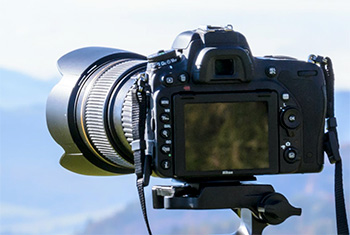Tip #1344: Which to Shoot – 4K or 1080p?
… for Random Weirdness
Tip #1344: Which to Shoot – 4K or 1080p?
Larry Jordan – LarryJordan.com
4K may be “everywhere,” but, often, shooting 1080p makes more sense.


This article, written by Charles Yeager, first appeared in PremiumBeat.com. This is a summary.
It is 2021, and nearly every new consumer and professional camera has the ability to film in 4K (even action cameras and phones!). So, this poses a question, “Should anybody be filming in 1080p anymore?” The short answer is—absolutely. But why? Let’s dive into the pros and cons for filming in 4K versus 1080p.
Pros for Filming in 4K
- More Resolution, More Creativity
- Color Grading and Keying
- More Pixel Data
- Online Compression Benefits
Pros for Filming in 1080p
- Faster Editing
- Less Storage Needed
- Faster Video Uploads
- Common Resolution
- Faster Streaming
- Perfect for Vlogs or Creators Starting Out
- Focus More on Composition
Story Above Everything
Video resolution certainly matters when it comes to factors like editing speed or details visible in a scene. Ultimately, though, the most important thing is going to be the story you tell. You’ve probably heard this time and time again. However, the story really is all that matters for most casual viewers.
EXTRA CREDIT
This article includes more details, links and example videos.


Larry, I gave this three stars because it completely overlooks the sort-of wonderful time we live in. We can shoot in a higher rez than we generally have to release at (I’m thinking shoot 4K, edit and distribute 2K here).
The advantage of this? Simply, you (just about) double the apparent number of cameras. In a 2K sequence, you can punch in to double the size of the image…meaning you can take that nice, EWS swooping jib shot from the top of the studio, and with a combination of the camera move and judicious resize-repo, take it into a lovely head n shoulders closeup that the cameraman could only dream of getting with his average-size lens. Or, your camera person did a lousy job of getting a tight on the star of your performance? No problemo, just punch in on the 4K until it’s tight enough for “60 Minutes”!
I’ve just completed 3 jobs, large musical production numbers for clients you’ve heard, seen and bought music from, and part of my secret to success is the wonderful ability to manipulate the framing of the image in post using this method (shoot 4K/edit 2K). I’d recommend that anyone try it.
Mike:
Good points. The biggest problem I have with cutting into a wide shot for a close-up is that depth of field doesn’t change. It needs to be done carefully to avoid creating a jump cut – which, I know, is all the fashion these days, but, sheesh.
Larry
Sheesh, Indeed. And yes, you’re spot on about depth of field. It’s most certainly a phoney-baloney way of creating a “closeup camera”.
Thanks as always for your expert expertise!